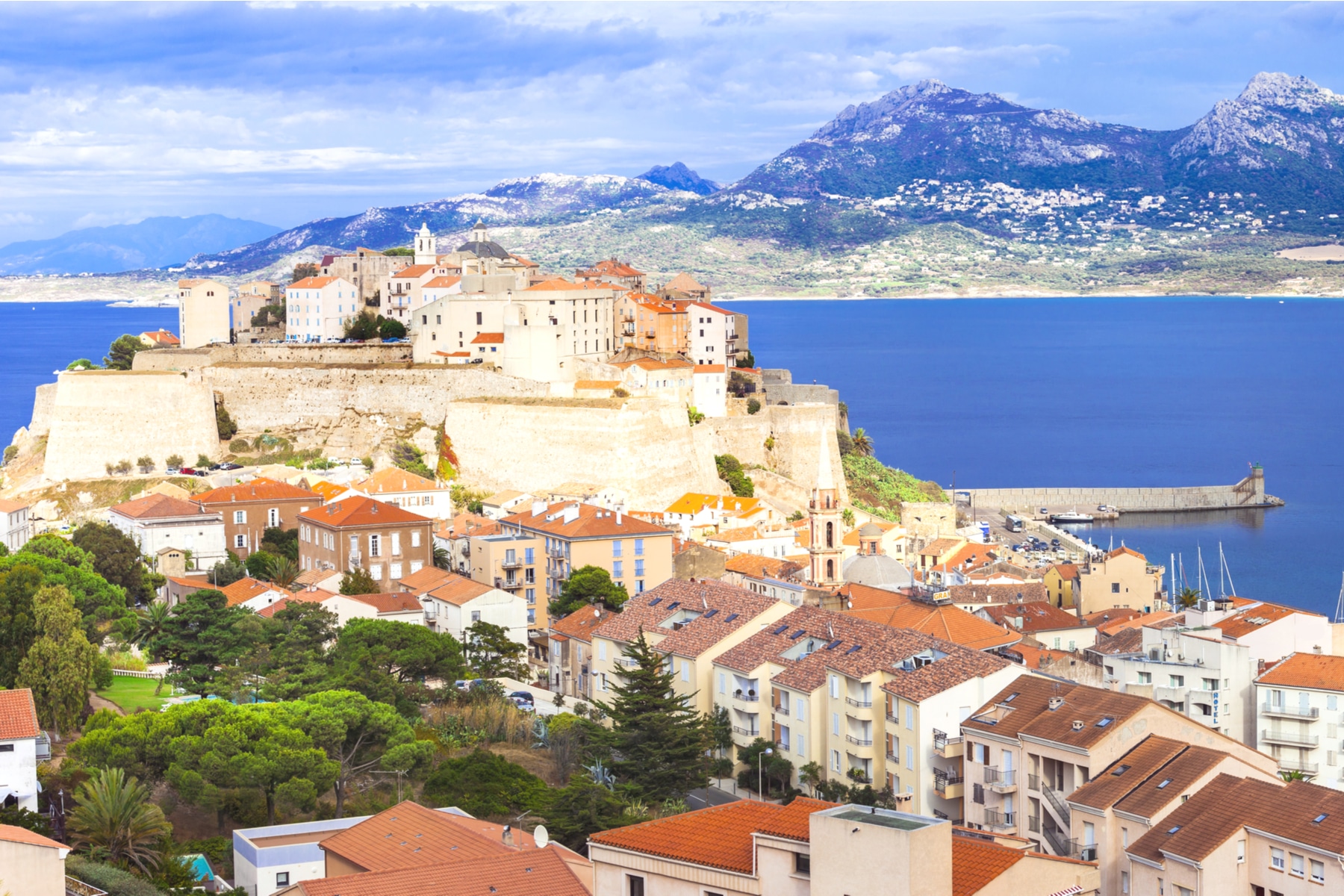Calvi

Citadel with twice risen church
High up on a rock sits the citadel of Calvis. It was built in the 15th century and today it is a landmark of the city. Except for the former palace of the governors - here are quarters of the paratroopers of the French Foreign Legion - the upper town between the walls is accessible. Although it appears quite small, it offers magnificent views of the lower town, the harbor and the sea.
At the highest point of the citadel is the Saint-Jean-Baptiste Cathedral. A first building dates back to the 13th century, but fell victim to a fire in the 15th century. After being rebuilt, it was destroyed again in 1567 by an explosion in the nearby powder arsenal. When it was rebuilt in 1570, it acquired its present appearance. Its interior is bright and friendly. Worth seeing are the richly decorated marble altar, the oak pulpit with filigree carvings and an alabaster holy water font.
Myth of Columbus
Calvi, along with other cities in Italy, France and Spain, does not miss the opportunity to claim that Calvi is the birthplace of Christopher Columbus. There is no evidence for this. Only that the navigator saw the light of day in the Republic of Genoa. After all, Corsica was part of this republic at that time. So it could be that the house in the Carrughju Di U Filu within the walls of the citadel is his birthplace. Since the English shot it up at the end of the 18th century, not much of the house remains today except for the ruins. A plaque with the year of birth of the America discoverer maintains the myth and mystery about Columbus: According to this plaque, he was born in 1436 and not in 1451, as usually stated.
Maritime flair and baroque masters
In the harbor district, numerous restaurants line Rue Clémenceau and Quai Landry. On the menu are fish and seafood and Corsican specialties. In addition to the traditional wooden sailboats that are still moored on the quay, today the excursion boats depart. Further south is the marina, where up to 400 boats dock in the summer. Picturesque is the Place du Docteur Crudeli where the baroque church Sainte-Marie-Majeure stands. The large church was built in 1774 and replaced a previous chapel. It is striking mainly because of its architecture: it has a polygonal floor plan. In addition, the nave is wider than long. There is nothing worth seeing in the dark interior. In the town hall of the city, parts of the art collection of Cardinal Fesch, which is actually located in Ajaccio, can be seen. There are 50 works on display, including paintings by Rubens.
[caption id="attachment_26624" align="aligncenter" width="800"] The church of Sainte-Marie-Majeure and the citadel of Calvi[/caption]
The church of Sainte-Marie-Majeure and the citadel of Calvi[/caption]
Directions
In the northwest of Corsica, the T30 leads from east to west and thus to Calvi.
Where is Calvi?
Calvi is a city in France. It is located about 858 km southeast of the capital Paris.